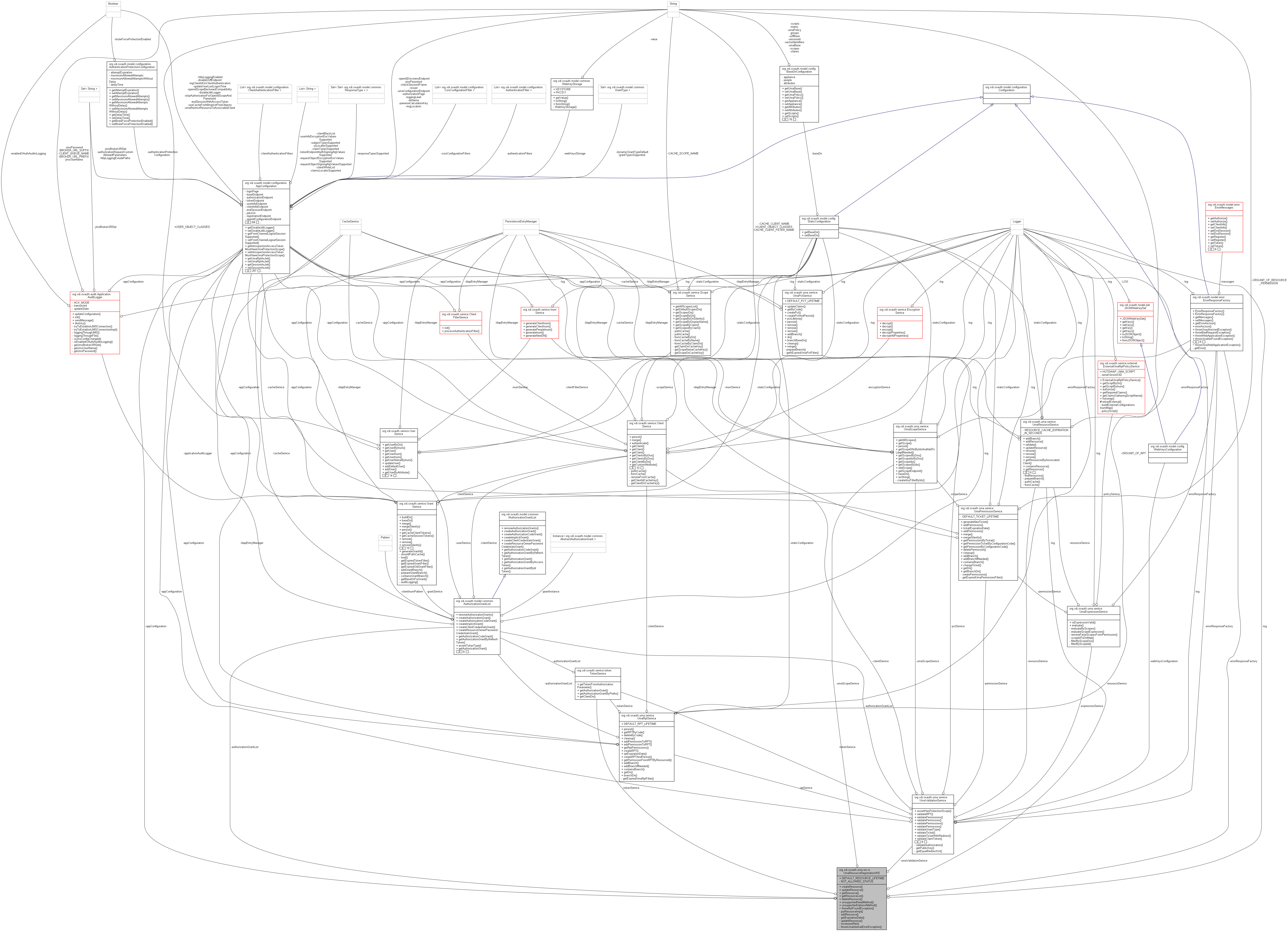
公開メンバ関数 | |
| Response | createResource ( @HeaderParam("Authorization") String authorization, @ApiParam(value="Resource description", required=true) UmaResource resource) |
| Response | updateResource (@HeaderParam("Authorization") String authorization, @PathParam("rsid") @ApiParam(value="Resource description ID", required=true) String rsid, @ApiParam(value="Resource description JSON object", required=true) UmaResource resource) |
| Response | getResource ( @HeaderParam("Authorization") String authorization, @PathParam("rsid") @ApiParam(value="Resource description object ID", required=true) String rsid) |
| List< String > | getResourceList ( @HeaderParam("Authorization") String authorization, @QueryParam("scope") @ApiParam(value="Scope uri", required=false) String scope) |
| Response | deleteResource ( @HeaderParam("Authorization") String authorization, @PathParam("rsid") @ApiParam(value="Resource description ID", required=true) String rsid) |
| Response | unsupportedHeadMethod () |
| Response | unsupportedOptionsMethod () |
静的公開変数類 | |
| static final int | DEFAULT_RESOURCE_LIFETIME = 2592000 |
関数 | |
| private< T > T | throwNotFoundException (String rsid) |
非公開メンバ関数 | |
| Response | putResourceImpl (Response.Status status, String authorization, String rsid, UmaResource resource) throws IOException |
| String | addResource (String rsid, UmaResource resource, String userDn, String clientDn) |
| Date | getExpirationDate (Calendar creationCalender) |
| String | updateResource (String rsid, UmaResource resource) |
| int | incrementRev (String rev) |
| Response | throwUmaInternalErrorException () |
静的非公開変数類 | |
| static final int | NOT_ALLOWED_STATUS = 405 |
詳解
The API available at the resource registration endpoint enables the resource server to put resources under the protection of an authorization server on behalf of the resource owner and manage them over time. Protection of a resource at the authorization server begins on successful registration and ends on successful deregistration.
The resource server uses a RESTful API at the authorization server's resource registration endpoint to create, read, update, and delete resource descriptions, along with retrieving lists of such descriptions. The descriptions consist of JSON documents that are maintained as web resources at the authorization server. (Note carefully the similar but distinct senses in which the word "resource" is used in this section.)
関数詳解
◆ addResource()
|
inlineprivate |
◆ createResource()
|
inline |
◆ deleteResource()
|
inline |
◆ getExpirationDate()
|
inlineprivate |
◆ getResource()
|
inline |
◆ getResourceList()
|
inline |
Gets resource set lists. ATTENTION: "scope" is parameter added by gluu to have additional filtering. There is no such parameter in UMA specification.
- 引数
-
authorization authorization scope scope of resource set for additional filtering, can blank string.
- 戻り値
- resource set ids.
◆ incrementRev()
|
inlineprivate |
◆ putResourceImpl()
|
inlineprivate |
◆ throwNotFoundException()
|
inlinepackage |
◆ throwUmaInternalErrorException()
|
inlineprivate |
◆ unsupportedHeadMethod()
|
inline |
◆ unsupportedOptionsMethod()
|
inline |
◆ updateResource() [1/2]
|
inline |
◆ updateResource() [2/2]
|
inlineprivate |
メンバ詳解
◆ appConfiguration
|
private |
◆ authorizationGrantList
|
private |
◆ DEFAULT_RESOURCE_LIFETIME
|
static |
◆ errorResponseFactory
|
private |
◆ log
|
private |
◆ NOT_ALLOWED_STATUS
|
staticprivate |
◆ resourceService
|
private |
◆ tokenService
|
private |
◆ umaScopeService
|
private |
◆ umaValidationService
|
private |
このクラス詳解は次のファイルから抽出されました:
- D:/AppData/OpenId/gluu/src/oxAuth/Server/src/main/java/org/xdi/oxauth/uma/ws/rs/UmaResourceRegistrationWS.java
 1.8.13
1.8.13